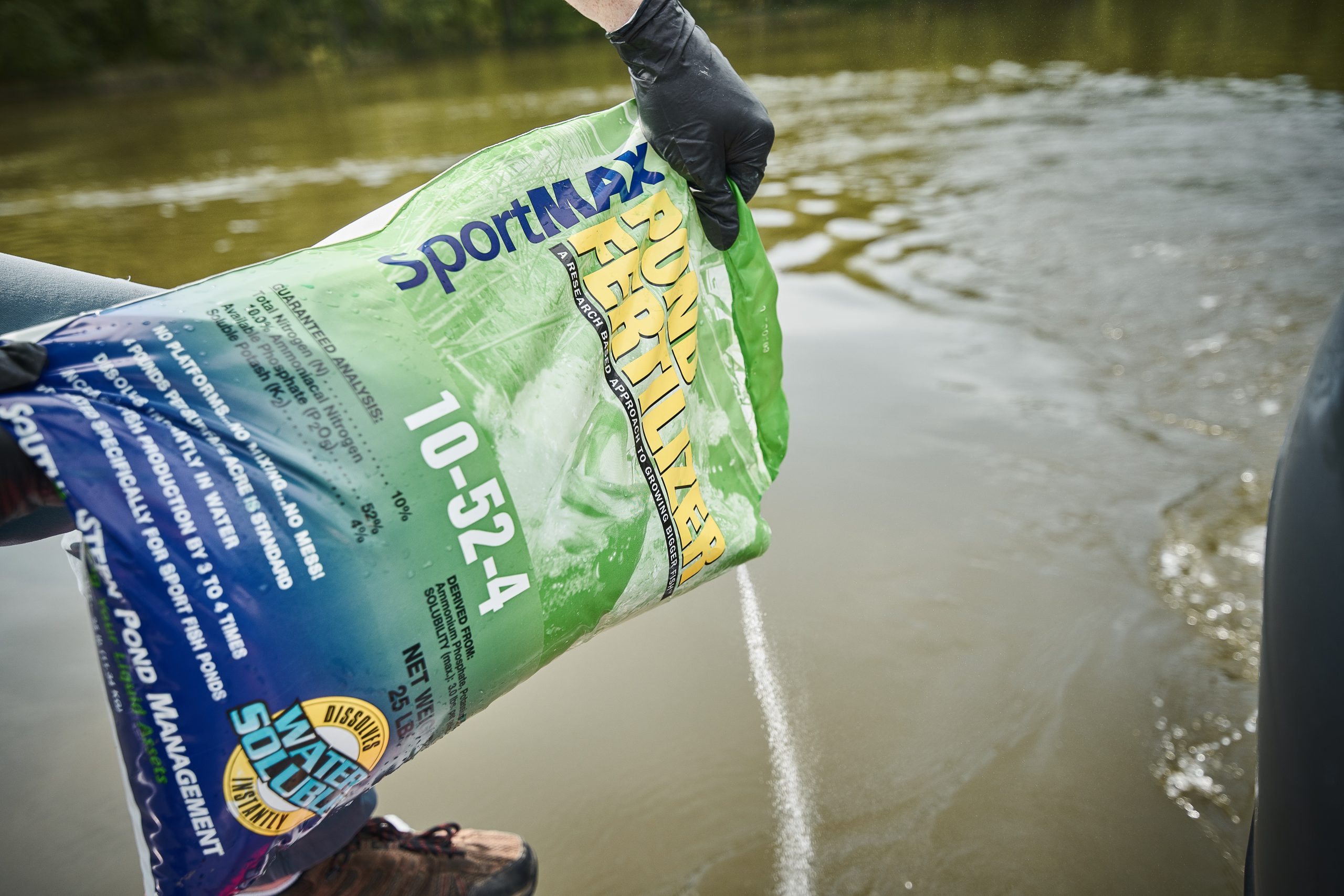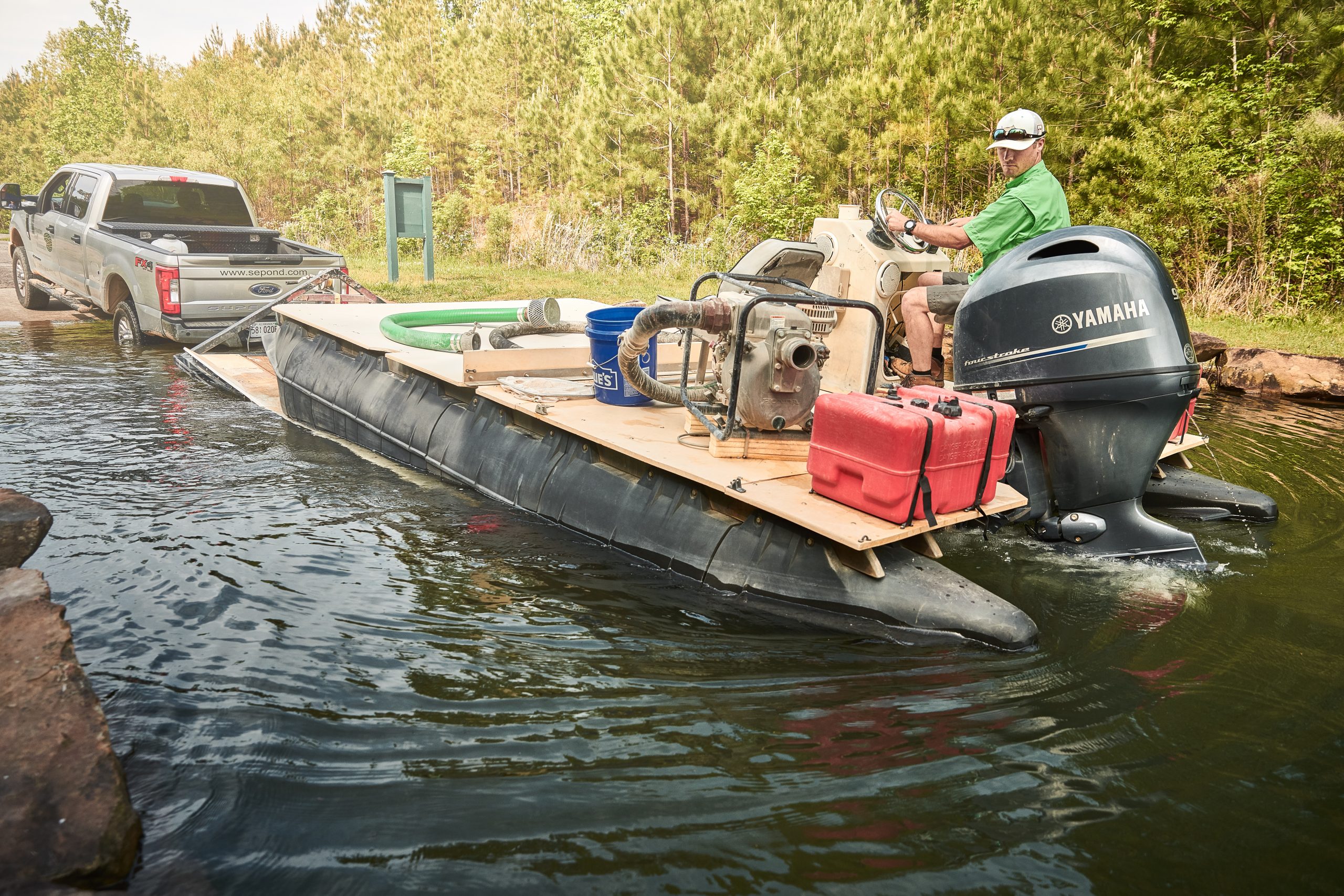Bass pond fishing tips are something we specialize in on the Great Days Outdoors Alabama Freshwater Fishing Report podcast and one of the questions we consistently receive is what do fish pond owners need to know and do to catch big bass in a pond. Obviously, there is no “silver bullet” for effective bass pond management but there are some things you can do that will start to add some heft to your fish.
To that end, on a recent episode we interviewed Norman Latona, owner of Southeastern Pond Management, headquartered in Calera, Al with offices in two states. You can listen to that interview below.
Southeastern Pond Management offers full-service pond management services including fish stocking, fertilizing and weed control, electrofishing, pond design and construction and more.
To start the ball rolling I asked Latona, in terms of water quality, what are the types of things that a private pond owner needs to keep his eyes on and address annually or at certain times of the year.

According to Latona, the first step to bass pond management is to make sure that when you are looking at water quality to remember that it needs to relate to something specific and what you want to accomplish. Pond owners need to decide what type of water quality they want. If they want the water to be pretty and clear, to be used primarily for swimming and secondary for fishing, they need to understand that that environment is not ideal as it relates to fish production. They need to make a choice as to whether they want to grow fish or do something different with the body of water.
“Water quality as it relates to water for consumption or swimming is different from water quality as it relates to fish production,” Latona said. “The beauty of a small impoundment is that it is self-contained and you can manipulate the water quality with just a few simple inputs and by being consistent in the application.”
Latona pointed out that the “cornerstone management inputs” is the ability to manage the alkalinity, which is the water hardness, and the fertility. He emphasized that the alkalinity and fertility are basically joined at the hip.
“Our water in this part of the country tends to be acidic which is a reflection of the soils that the water is sitting on and we add lime or other components to increase the alkalinity,” he said. “We can manipulate the fertility level by adding inorganic fertilizer just like you fertilize a food plot or your lawn.”
When it comes to pond fertilization, phosphorus is the key and the fertilizer that they often use has a little more than a 50% phosphorus content level.
“Through proper liming and alkalinity and managing the fertility through fertilizing, we can dramatically enhance the water quality as it relates to fish production,” Latona said. “That results in a much greater fish production, faster growth, a higher top end and just a more productive body of water.”
Latona explained that liming and fertilizing impacts the very base of the food chain, which is the planktonic community (phytoplankton), which consists of tiny, free floating algae that gives the water a green tint. It also affects the zooplankton level, (tiny, aquatic insects) which feed on the phytoplankton as a starter who, in turn, get eaten by predators. Basically, everything emanates from that. Small gets eaten by something bigger, who gets eaten by something even bigger and so on. It is a basic food chain scenario that is key to proper bass pond management.
“If we can enhance and increase the production at the very base level then we can control production all the way up to the top and the effect can be dramatic,” Latona said. “That’s why we refer to liming and fertilizing as cornerstone management inputs for small impoundments.”

Latona said that liming and fertilizing together create “optimal conditions” when it comes to water quality enhancement to increase fertility for fish production. Just fertilizing alone won’t really get the job done due to the fact that fertilizer is inherently inefficient and, in order to be effective, fertilizer applications need to be consistent and monitored for proper bass pond management. Bass pond fishing tips and knowing how to catch big bass in ponds aren’t helpful if you are not managing your pond properly.
“We can sort of overwhelm the lake of alkalinity in more acidic conditions by applying more fertilizer than we normally would but it’s not as consistent and part of the reason is because of water turnover and the water doesn’t stay in the pond all the time,” Latona noted. “We look at the growing season as being March through the end of October and, with regular spaced out applications, we can keep the phosphorus and fertility level up.”
According to Latona, when the alkalinity level is marginal or low, a pond goes through “boom and bust” cycles of plankton, where one moment it has a nice dense plankton boom and then it will suddenly get brown and the water gets clear again.
“Liming helps take these rough edges off a bit and if you’re not willing to lime and fertilize together then you aren’t really managing your pond and even the best bass pond fishing tips will help at that point,” Latona said.
Latona shared that effectively liming a pond can be a little tricky because, unlike fertilizer, which is highly water soluble and travels throughout a pond, limestone is rock. While water will ultimately dissolve and wear down limestone “chunks” it will take years, even if it is subject to water flow at the head of creek and that type of distribution makes it problematic in terms of any viable effect on the water.
What Southeastern Pond Management applies is limestone that has been crushed down to a fine powder and then it is distributed over the whole pond.

“We pile the limestone onto a big barge and drive out to a section of the lake and we spray it off and we do the same thing for different sections of the lake,” Latona said. “Our objective is to cover the whole bottom with crushed limestone where it ‘rains down’ through the water and settles on the bottom and that is where a chemical reaction takes place between the bottom mud and the limestone and that is where we create alkalinity.”
Latona stressed that, if you can’t catch big bass in your pond, just “occasionally” fertilizing a pond really doesn’t do the job.
“The reality is that putting in 50% of the fertilizer that is indicated to be ideal rarely gets you 50% of the results and a lot of times you get no results,” Latona said.
The bottom line is that for the best bass pond management you need to strike a balance between liming and fertilizing that results in high fish production and meaningful fish growth.
The big question is how much does all of this cost and is it affordable? Latona pointed out that the cost of materials is relatively low and even with application costs, the project isn’t cost prohibitive and is affordable.
“You can buy agricultural limestone for $12-$15.00 a ton and maybe even less and, of course you have to pay for trucking but it isn’t cost prohibitive, even for a larger body of water,” Latona said. “We typically apply about four pounds of fertilizer per acre for every application and if you make ten applications a year then you are putting in about 40 pounds of fertilizer per acre in the water at roughly $1.00 per pound, which is about $40-$50.00 an acre, so it isn’t that daunting.”
Latona said keeping tabs on the water clarity gives a pond owner the heads up on when he needs another fertilizer application. He maintains that in the optimum fertilization mode, the visibility standard should be between 18 and 24 inches.
“A good rule of thumb is that if you can see 36 inches in the water, you need to fertilize to get the visibility down to 16 -18 inches,” Latona concluded.
For more bass pond fishing tips on how to catch big bass in ponds, as well as everything else freshwater in Alabama, check out the Alabama Freshwater Fishing Report, dropping every Thursday.
Important Contact Info
Southeastern Pond Management
334-887-7663




